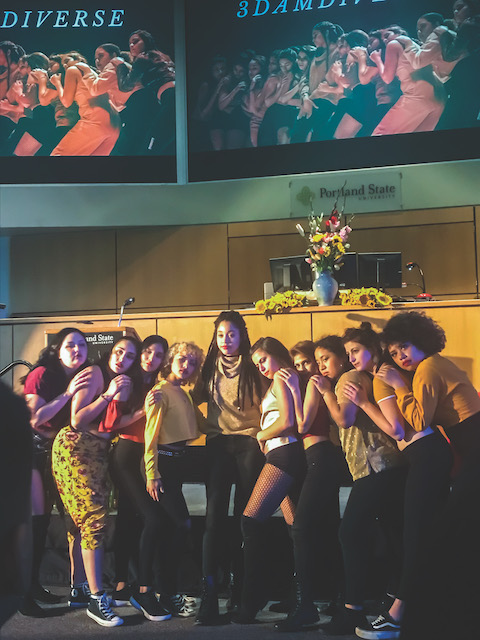Portland State’s Transportation Research and Education Center invited Dr. L. Penny Rosenblum from the University of Arizona to present on the challenges faced by visually impaired individuals as they navigate through public spaces on June 28.
Some of the most common challenges faced by the visually impaired included obscured signage either due to size, placement or lack of contrasting colors, stairs which were not clearly identifiable and a lack of consistency among the various navigational aids such as maps, labeling and audible cues for crosswalks.
“Sometimes in a subway station, they put up posters or signs at a bus station,” said Rosenblum. “It’s a blue background with dark blue letters—it’s not good contrast. So yes, I might be able to see that there is a display with some type of information, but being able to read that information is a challenge.”
Rosenblum demonstrated the challenges of visually impaired people by using images and videos simulating different levels of visual impairment, including lack of contrast sensitivity, lack of visual acuity, light sensitivity and macular degeneration.
Visually impaired people who are traveling, Rosenblum explained, need to have orientational knowledge about the space they’re traveling through, and it’s imperative for designers to make that information clear and accessible. They may also utilize mobility tools such as walking canes or, less often, guide dogs.
Rosenblum said the innovation of green-painted bike lanes has helped visually impaired bicyclists, such as herself, to stay safe on the roads and separate from vehicles.
Other improvements she suggested included making signs at different heights and using white or yellow text on a black background for signage. In addition, she suggests if one sees a visually impaired person who looks lost or confused to approach that person and offer assistance.
“People with visual impairments do travel—they might be a little creative when they travel, they may take a little bit longer to travel, they may need orientation or mobility [assistance] to get to know their environment, but they’re not going to be at home sitting on their butts,” Rosenblum said. “They’re going to be out there doing their thing.”
Visual impairments are most often found in older populations, Roseblum said. “In the school-age population, it’s one in 1,000 children that have a visual impairment. In the over-80 population, it’s one in three. So as we go through life, older adults are more likely to have problems with vision.”
Among the population of the visually impaired, about 90% have at least some vision.






